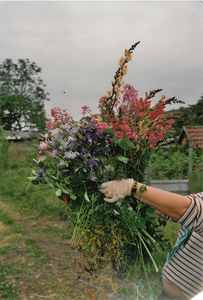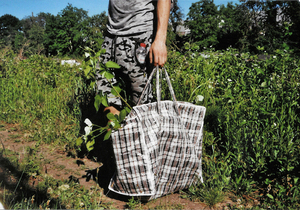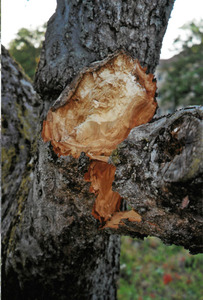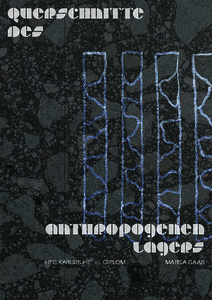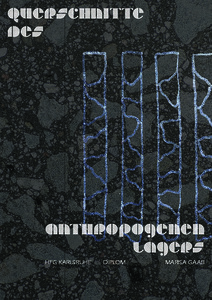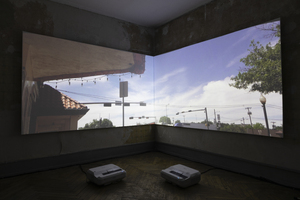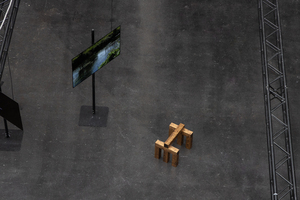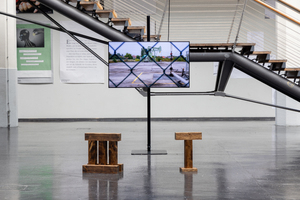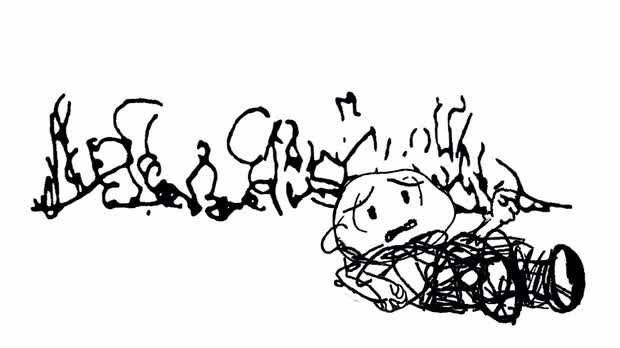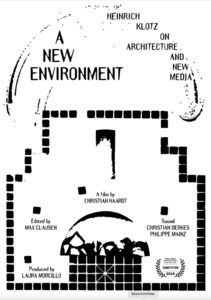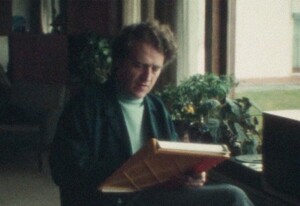"Diplomarbeit"
| Begriff | Diplomarbeit |
| Metakey | Typ der Abschlussarbeit (institution:graduation-project-type) |
| Typ | Keyword |
| Vokabular | HfG |
1327 Inhalte
- Seite 1 von 111
Dokumentation des Verschwindens
- Titel
- Dokumentation des Verschwindens
- Autor/in
- Kategorie
- Schlagworte
- Titel
- Dokumentation des Verschwindens
- Titel (en)
- Documentation of the disappearance
- Urheberrechtshinweis
- ©Leonie Mühlen
- Rechtsschutz/Lizenz
- Freigabe Nutzung HfG
- Medienersteller/in
- Beziehung/Funktion
- Medien-Beschreibung
- Fotografische Dokumentation des Verschwindens
67-teilige Fotoserie, Tintenstrahldruck auf Recyclingpapier, Tapetenkleister
- Fotografische Dokumentation des Verschwindens
- Medien-Beschreibung (en)
- Photographic documentation of the disappearance
67-part photo series, inkjet print on recycled paper, wallpaper paste
- Photographic documentation of the disappearance
- Projektleiter/in
- Semester
- Studiengang
- Typ der Abschlussarbeit
- Importiert am
- 17.06.2024
- Übergeordnete Sets
- 1
Dokumentation des Verschwindens
- Titel
- Dokumentation des Verschwindens
- Autor/in
- Kategorie
- Schlagworte
- Titel
- Dokumentation des Verschwindens
- Titel (en)
- Documentation of the disappearance
- Urheberrechtshinweis
- ©Leonie Mühlen
- Rechtsschutz/Lizenz
- Freigabe Nutzung HfG
- Medienersteller/in
- Beziehung/Funktion
- Medien-Beschreibung
- Fotografische Dokumentation des Verschwindens
67-teilige Fotoserie, Tintenstrahldruck auf Recyclingpapier, Tapetenkleister
- Fotografische Dokumentation des Verschwindens
- Medien-Beschreibung (en)
- Photographic documentation of the disappearance
67-part photo series, inkjet print on recycled paper, wallpaper paste
- Photographic documentation of the disappearance
- Projektleiter/in
- Semester
- Studiengang
- Typ der Abschlussarbeit
- Importiert am
- 17.06.2024
- Übergeordnete Sets
- 1
Dokumentation des Verschwindens
- Titel
- Dokumentation des Verschwindens
- Autor/in
- Kategorie
- Schlagworte
- Titel
- Dokumentation des Verschwindens
- Titel (en)
- Documentation of the disappearance
- Urheberrechtshinweis
- ©Leonie Mühlen
- Rechtsschutz/Lizenz
- Freigabe Nutzung HfG
- Medienersteller/in
- Beziehung/Funktion
- Medien-Beschreibung
- Fotografische Dokumentation des Verschwindens
67-teilige Fotoserie, Tintenstrahldruck auf Recyclingpapier, Tapetenkleister
- Fotografische Dokumentation des Verschwindens
- Medien-Beschreibung (en)
- Photographic documentation of the disappearance
67-part photo series, inkjet print on recycled paper, wallpaper paste
- Photographic documentation of the disappearance
- Projektleiter/in
- Semester
- Studiengang
- Typ der Abschlussarbeit
- Importiert am
- 17.06.2024
- Übergeordnete Sets
- 1
Dokumentation deutsch
- Titel
- Dokumentation deutsch
- Autor/in
- Kategorie
- Schlagworte
- Datierung
- 30.10.2023
- Titel
- Dokumentation deutsch
- Titel (en)
- documentation german
- Urheberrechtshinweis
- © Marisa Gaab
- Rechtsschutz/Lizenz
- Freigabe Nutzung HfG
- Medienersteller/in
- Beziehung/Funktion
- Projektleiter/in
- Semester
- Studiengang
- Typ der Abschlussarbeit
- Importiert am
- 27.05.2024
- Übergeordnete Sets
- 1
Dokumentation englisch
- Titel
- Dokumentation englisch
- Autor/in
- Kategorie
- Schlagworte
- Datierung
- 30.10.2023
- Titel
- Dokumentation englisch
- Titel (en)
- documentation englisch
- Urheberrechtshinweis
- © Marisa Gaab
- Rechtsschutz/Lizenz
- Freigabe Nutzung HfG
- Medienersteller/in
- Beziehung/Funktion
- Projektleiter/in
- Semester
- Studiengang
- Typ der Abschlussarbeit
- Importiert am
- 27.05.2024
- Übergeordnete Sets
- 1
Double U Co. Double Utopia. I’ll Double U.
- Titel
- Double U Co. Double Utopia. I’ll Double U.
- Autor/in
- Titel
- Double U Co. Double Utopia. I’ll Double U.
- Titel (en)
- Double U Co. Double Utopia. I’ll Double U.
- Urheberrechtshinweis
- © Phil Zumbruch
- Rechtsschutz/Lizenz
- Freigabe Nutzung HfG
- Medienersteller/in
- Beziehung/Funktion
- Semester
- Studiengang
- Typ der Abschlussarbeit
- Importiert am
- 12.09.2024
- Übergeordnete Sets
- 0
downstream1 + oil/wood stool (wide)
- Titel
- downstream1 + oil/wood stool (wide)
- Autor/in
- Schlagworte
- Datierung
- 24.10.2024 - 29.10.2024
- Titel
- downstream1 + oil/wood stool (wide)
- Titel (en)
- downstream1 + oil/wood stool (wide)
- Urheberrechtshinweis
- © Lukas Klein
- Rechtsschutz/Lizenz
- Freigabe Nutzung HfG
- Medienersteller/in
- Beziehung/Funktion
- Projektleiter/in
- Semester
- Studiengang
- Typ der Abschlussarbeit
- Importiert am
- 03.11.2024
- Übergeordnete Sets
- 1
downstream2 + oil/wood stools
- Titel
- downstream2 + oil/wood stools
- Autor/in
- Schlagworte
- Datierung
- 24.10.2024 - 29.10.2024
- Titel
- downstream2 + oil/wood stools
- Titel (en)
- downstream2 + oil/wood stools
- Urheberrechtshinweis
- © Lukas Klein
- Rechtsschutz/Lizenz
- Freigabe Nutzung HfG
- Medienersteller/in
- Beziehung/Funktion
- Projektleiter/in
- Semester
- Studiengang
- Typ der Abschlussarbeit
- Importiert am
- 03.11.2024
- Übergeordnete Sets
- 1
Duschgel als Raumduft
- Titel
- Duschgel als Raumduft
- Titel (en)
- 7sqm Inside Views
- Autor/in
- Beschreibung (de)
- Die unterschiedlichen filmische Sequenzen waren als Projektionen im Raum (großes Studio) auf Wänden zu sehen. Sie erzählen von Überlebensstrategien auf engem Raum, von der Subkultur im Gefängnis:
Sucuk aus dem Wasserkocher, Gebetsketten aus Brot,
Apfelbäume aus Joghurtbechern und Duschgel als Raumduft.
Die Sequenzen sind Erzählungen aus dem Interview mit Badaue (Pseudonym). Die zu sehenden Handlungen hat er, während der Zeit der Untersuchungshaft, zum Teil selbst entwickelt, zum Teil von anderen Inhaftierten erfahren.
- Die unterschiedlichen filmische Sequenzen waren als Projektionen im Raum (großes Studio) auf Wänden zu sehen. Sie erzählen von Überlebensstrategien auf engem Raum, von der Subkultur im Gefängnis:
- Beschreibung (en)
- The different film sequences were shown as projections in the room (Studio) on walls. They tell of survival strategies in confined spaces, of the subculture in prison:
Sucuk from a kettle, prayer chains made of bread,
apple trees from yogurt pots, and shower gel as a room scent.
The sequences are narrations from the interview with Badaue (pseudonym). He developed the actions to be seen, during the time of pre-trial detention, partly himself, partly experienced from other detainees.
- The different film sequences were shown as projections in the room (Studio) on walls. They tell of survival strategies in confined spaces, of the subculture in prison:
- Typ des Projekts/Werks
- Schlagworte
- Mitwirkende
- Material
- Technik/Verfahren/Formate
- MP4
- Abmessungen
- 1620 × 1080
- Ort: Institution
- Ort
- großes Studio
- Stadt
- Land
- Titel
- Duschgel als Raumduft
- Urheberrechtshinweis
- Mascha Dilger, Tibor Pilz, Alexander Thelen, Badaue
- Rechtsschutz/Lizenz
- Freigabe Nutzung HfG
- Medienersteller/in
- Projektleiter/in
- Semester
- Studiengang
- Typ der Abschlussarbeit
- Importiert am
- 31.07.2023
- Übergeordnete Sets
- 1
dying one_Ausschnitt
- Titel
- dying one_Ausschnitt
- Titel (en)
- a staged performance at a place no longer quiet
- Untertitel des Projekts/Werks (en)
- Snippet(!) of one of the installation's five videos
- Autor/in
- Schlagworte
- Datierung
- 06.12.2023
- Sprache
- Ort: Institution
- Stadt
- Land
- Titel
- dying one_Ausschnitt
- Titel (en)
- dying one_snippet
- Urheberrechtshinweis
- © Jonathan Blaschke
- Rechtsschutz/Lizenz
- Medienersteller/in
- Medien-Beschreibung
- Dauer: 2:19 Minuten, Format: mp4
- Projektleiter/in
- Semester
- Studiengang
- Typ der Abschlussarbeit
- Importiert am
- 15.02.2024
- Übergeordnete Sets
- 1
Eine Neue Umwelt
- Titel
- Eine Neue Umwelt
- Autor/in
- Kategorie
- Datierung
- 2019
- Sprache
- Untertitel (Film)
- Land
- Titel
- Eine Neue Umwelt
- Titel (en)
- A New Environment
- Urheberrechtshinweis
- © Christian Haardt
- Rechtsschutz/Lizenz
- Medienersteller/in
- Beziehung/Funktion
- Projektleiter/in
- Semester
- Studiengang
- Typ der Abschlussarbeit
- Importiert am
- 03.03.2025
- Übergeordnete Sets
- 1
Eine Neue Umwelt
- Titel
- Eine Neue Umwelt
- Autor/in
- Kategorie
- Datierung
- 2019
- Sprache
- Untertitel (Film)
- Land
- Titel
- Eine Neue Umwelt
- Titel (en)
- A New Environment
- Urheberrechtshinweis
- © Christian Haardt
- Rechtsschutz/Lizenz
- Medienersteller/in
- Beziehung/Funktion
- Abgebildete Personen
- Projektleiter/in
- Semester
- Studiengang
- Typ der Abschlussarbeit
- Importiert am
- 02.03.2025
- Übergeordnete Sets
- 1
